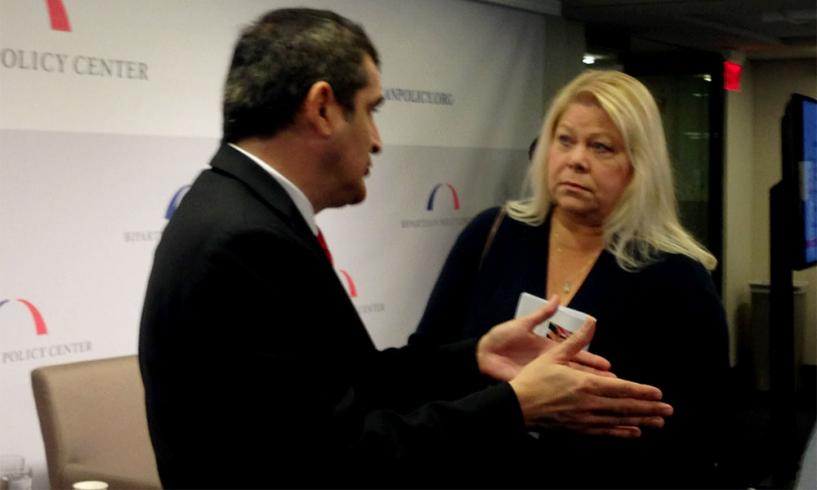By Dawn Donovan-Kinder, MHA/ED, BSN, RN, OCN®
As an ONS member, I participate in the Bipartisan Policy Center and represent oncology nursing in dialogue and advocacy regarding health policy topics that are at the forefront of cancer care.
In September 2016, I attended “Realizing Opportunities in Cancer Prevention,” a panel discussion at the Center in conjunction with the American Cancer Society (ACS) Cancer Action Network in Washington, DC. The panel was comprised of leading national public health experts: three former and current Department of Health and Human Services assistant secretaries for health. The panel discussed programs and policies that can support the goal of improving cancer prevention.
Preventing Cancer Through Health Policy
In his opening remarks, Richard Wender, MD, chief cancer control officer at ACS, cited the society’s statistics that paint a striking picture of cancer’s prominence in the United States.
“More than 1.6 million new cancer cases are expected to be diagnosed in 2016. In addition, cancer is the second most common cause of death in the United States, accounting for nearly one of every four deaths with more than 1,500 people dying from cancer each day,” he explained.
Other statistics Wender quoted included that we have achieved a 26% decrease in age-adjusted mortality and a 13% decrease in lung cancer mortality in women. Mortality rates for breast cancer slightly decreased, and colon cancer rates decreased as well. He explained that lower rates in age-adjusted mortality for women can be partially attributed to the fact that women historically have started smoking later in life and subsequently stop smoking later.
But is cancer inevitable or can it be prevented? Research shows that many cancers and cancer deaths could be prevented through recommended screening tests, vaccines, and healthy lifestyle choices. Health policies such as the Affordable Care Act have mandated that such services are provided at low or no cost to help contribute to a healthy America.
Speaking Out Against E-Cigarettes
The panel raised many topics about cancer prevention, but I asked a burning question regarding the increased use of e-cigarettes and vapors. This quickly became a hot topic of discussion within the group, and the panel explained that it was also being debated throughout the United States and United Kingdom.
Howard Koh, MD, MPH, one of the panel members who is a professor of the practice of public health leadership at the Harvard T.H. Chan School of Public Health, said that e-cigarettes and vapors, although they do contain the addictive substance nicotine, are an initiative to decrease the usage of cigarettes and other related smoking substances. Studies regarding this topic are coming out slowly, and nothing has been presented yet regarding the effects of second-hand vapor smoke.
As oncology nurses, we need to continue to be a voice for our patients and the public when it comes to preventing cancer from tobacco use, whether it’s from e-cigarettes, vapors, or other forms. The National Cancer Institute links cigarette smoking to 14 types of cancer and a host of other comorbid conditions that can complicate treatment in patients with cancer.
Look to ONS to share the latest research on second-hand vapor smoke when it becomes available, and join the society in advocating for prevention and cessation programs. Learn more about ONS’s advocacy work and get involved on a local, state, or national level.






